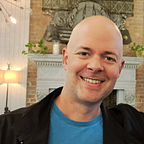A UX journey upstream and back
Last fall I was introduced to a local nonprofit, who wanted a mobile app. Requirements were broad, and it wasn’t clear where I could add value as a UX designer.
To me this felt like an opportunity to help the nonprofit define their needs. An opportunity to travel upstream.
The salmon swim
Like many of us, I started my design career at the bottom. People shared design requirements, and I leveraged my training to design the screens.
But before long I started showing my designs to people to make them better, much like any designer.
It was casual at first, guerilla style. But over time I refined those techniques and sharpened their value. Eventually it became my job to test prototypes directly with customers, much like other UX designers waking up to the value of research.
The next upstream dive was to explore new technologies — interviewing people about their chatbot usage, for example, to inform what the prototype would even be.
But other people had always formulated the reason for an experience to exist. For my nonprofit, it was time to explore a project’s origin for the first time.
A murky start
How do you wrap your arms around a broad design request?
In this case, stakeholder interviews helped in a fundamental way. I met with the board of directors one evening with some Post-Its and asked: What are the top 3–5 organizational problems you want to solve? They sat quietly for a set amount of time, quietly writing their answers. Then each person presented to the group. Duplicate answers were gathered together, and I suggested prioritizing them.
Soon after I moderated a similar exercise focused on solutions.
That month, I spent time interviewing subject matter experts at their workspaces, recording conversations about workflows, personas, tools, workarounds, and inefficiencies. I included painstaking transcriptions in the reports I wrote, and presented findings to the client.
Then I waited to hear back.
And heard nothing.
The holidays came and went, and I began to worry that I hadn’t provided any value.
A springtime thaw
As I would later learn, the upstream exercises benefited the organization more than a single mobile app ever could, leading the nonprofit to train staff and explore existing tools. They later expressed their happiness.
By April, the exercises also helped get a newly-assembled development team up to speed. Knowing about the client’s problems helped us understand which ones we could help solve. Meanwhile, the client was confident and organized.
We all began working together more closely, and it started to feel like a real project.
Back into familiar waters
In the following weeks, we realized it wouldn’t be an app at all, but a responsive web experience. A pared-down MVP began to emerge.
A wireframe-style prototype fostered conversations with clients and developers. I methodically tested it with users and continue to iterate on it. Its features felt like they would fit together and add value.
Now, as conversations turn to visual styling and data sources, I find myself working as a downstream UX designer again — grateful for that murky upstream experience.
